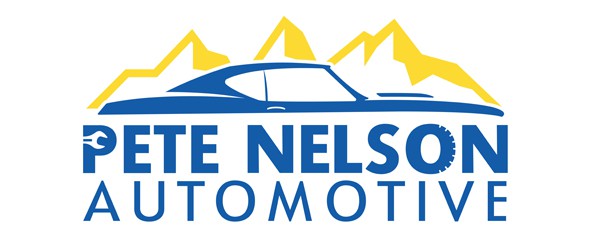
As the first flowers of spring bloom, it’s not just your home that needs a seasonal refresh; your vehicle does too. After enduring harsh winter conditions, your car might silently suffer from hidden damage that could affect its performance and safety. In this article, Pete Nelson Automotive will cover the top 10 essential spring car maintenance tasks that will ensure your ride remains in peak condition and ready for blooming road adventures.
1. Assess Winter Damage: Identify and Repair
Winter can be rough on your vehicle, especially with road salt and freezing temperatures. It’s essential to check for hidden damage come spring. Key areas to inspect include:
- Frame Rails and Wheel Wells: These can trap road salt, leading to rust.
- Exhaust Components: Salt can corrode these and other metal parts.
- Suspension Parts: Vulnerable to corrosion, affecting vehicle stability.
Scratches or fading paint let salt seep in, quickening rust. This can weaken your vehicle’s structure.
Actions to Consider:
- Thorough Cleaning: Wash your car, focusing on undercarriage and wheel wells. This removes salt that can damage the frame.
- Inspect Brakes: Ensure winter hasn’t worn down brake pads or rotors.
- Check Suspension: Look for rust or damage that could affect ride quality.
Regular maintenance like this keeps your car in top shape and prevents costly repairs down the road.
2. Check Critical Safety Systems: Brakes and Suspension
Spring is the perfect time to check your car’s critical safety systems, like brakes and suspension. Winter driving can wear out brakes, pads, and rotors. Moisture can leak into brake fluid during cold weather, weakening stopping power. Make sure to change old fluid and inspect brakes for soft pedals or vibrations in the steering wheel. These signs may require immediate attention to avoid costly repairs.
Salt and sand used on roads in winter can hurt suspension lubrication and seals. This can impact vehicle control. To ensure proper safety, inspect the suspension system. Look for uneven tire wear or pulling to one side when driving. These may signal alignment issues that need correcting.
Here’s a quick checklist:
- Inspect and replace brake pads if needed
- Check brake fluid for moisture and replace with fresh fluids
- Test for vibrations in the steering wheel
- Ensure tire alignment is correct
- Look for signs of uneven tire wear
A little extra care now can enhance safety and help prevent issues later. Use this spring car maintenance checklist to keep your vehicle in top shape as the cold temperatures fade away.
3. Inspect and Charge Your Battery: Stay Powered
Spring is the perfect time to check your car battery. After harsh cold temperatures, inspecting battery voltage, terminals, and connections ensures your vehicle will start reliably. Cold weather can be hard on batteries, so testing and possibly replacing them is crucial during this season.
A secure battery prevents internal components from loosening due to rattling and vibration. An improperly secured battery can shorten its lifespan. Batteries older than three years should be tested as they are prone to unexpected breakdowns if not maintained.
Did you know that heat can wear down a battery faster than cold? In hotter climates, a battery might last only two to four years. Regular care can help avoid costly repairs.
Here’s a quick checklist for your battery:
- Check Voltage: Ensure it’s at the proper level.
- Inspect Terminals: Clean any corrosion.
- Check Connections: Ensure they are secure.
- Test Battery Age: Consider replacement if older than three years.
Stay powered this spring by giving your car battery the extra care it deserves!
4. Examine Belts and Hoses: Prevent Breakdowns
Spring is the ideal season to inspect your car’s belts and hoses. Cold temperatures during winter can lead to cracks, fraying, or slackness. Check the serpentine and other belts for any signs of wear. If they look cracked or loose, it’s time for a replacement.
Hoses to Inspect:
- Coolant Hoses
- Brake Hoses
- Power Steering Hoses
Look for cracks, leaks, or any damage. Even if there’s no visible damage, regular replacement is key. This preventative step helps maintain vehicle reliability and avoids costly repairs. Checking these components ensures your car runs smoothly and prevents unexpected failures.
Checklist for Belts and Hoses:
- Inspect belt tension and condition
- Check for any visible wear
- Verify hose integrity for cracks or leaks
- Replace if necessary
Ensure that all components are in good condition, as neglect can lead to breakdowns and require costly towing services. By keeping an eye on your belts and hoses, you’re taking extra care to boost your car’s reliability and performance.
5. Tire Care: Inspection, Rotation, and Pressure Check
Tire care is essential for safe driving, especially during the shift from cold weather to spring showers. Start by switching out winter tires for regular ones. This step ensures your vehicle is ready for warmer temperatures. Next, check your tire pressure. Proper tire pressure is crucial for fuel efficiency and tire longevity. It helps to prevent uneven wear.
Tread depth is another critical factor. It ensures your tires can grip the road securely, even in wet conditions. Use a simple tread depth gauge to ensure your tires meet safety standards.
Regular tire rotation is equally important. Aim for a rotation every 10,000 kilometers. This practice helps maintain even wear across all tires, extending their lifespan.
Here’s a quick checklist:
- Replace winter tires with regular tires.
- Check and adjust tire pressure.
- Measure tread depth.
- Rotate tires every 10,000 kilometers.
Keep your tires in top condition. They are the only part of your car that touches the road, making them vital for safety and performance. Consistent inspection and maintenance can save you from costly repairs and ensure a smoother ride through spring.
6. Top Off Fluids: Cooling and Hydraulic Systems
Regularly checking your car’s fluid levels is essential. To prevent costly repairs, pay attention to your cooling and hydraulic systems. Low fluid levels in systems like power steering, brakes, and engine coolant could signal leaks and require inspection.
Before topping off, assess the condition of the current fluids. If they are grimy, gritty, or emit a burnt smell, a complete change may be necessary. Always add a little fluid at a time and recheck with a clean dipstick to avoid overfilling.
Fluid Type and Desired Levels:
|
Fluid Type |
Desired Level |
|---|---|
|
Engine Coolant |
Maximum/Hot |
|
Brake Fluid |
Close to Max |
|
Power Steering |
Full line |
Tips for Topping Off Fluids:
- Use your vehicle’s owner manual to select the correct fluids.
- Be patient and precise to avoid overfilling.
- Consistently monitor brake and power steering fluid for safe operation.
Taking these steps ensures your car remains reliable and reduces risks associated with fluid-related system failures.
7. Oil and Filter Change: Engine Longevity
Regular oil and filter changes are key to maintaining a healthy engine. Over time, motor oil can gather impurities, making it less effective. When oil ages, it can result in higher fuel consumption and decreased engine performance. This is why scheduling an oil change at the start of spring is smart. Fresh oil and filters help keep the engine running smoothly throughout the season.
In colder climates, changing the oil at the beginning of new seasons can significantly extend the life of an older engine. Fresh oil prevents contaminants from accumulating, which protects the engine and enhances its longevity.
Here is a checklist to ensure your engine stays in top shape:
- Schedule an oil change at the beginning of spring.
- Use the recommended oil type for your car.
- Replace the oil filter with every oil change.
- Check for any signs of leaks or issues.
By following these steps, you can ensure your engine runs efficiently and lasts longer. Regular maintenance now can prevent costly repairs later on.
8. Windshield Wipers and Washer Fluid: Ensure Visibility
Spring is here, and ensuring clear visibility is key. Snow and ice from cold weather can wear down your windshield wiper blades. Make it a priority to check and replace them now. Worn blades can cause streaks or noise, which indicates it’s time for new ones.
Here’s a simple checklist for maintaining your windshield wipers:
- Inspect Blades: Look for streaking, awkward noises, or uneven wiping.
- Clean Blades: Wipe them with a wet paper towel for better performance.
- Replace if Needed: Damaged or worn-out blades should be replaced immediately.
- Check Fluid Sprayers: Make sure they work properly to avoid impaired visibility.
In addition, keep your windshield wiper fluid full. It plays an essential role during rainy spring days by clearing away grime. Remember, effective windshield wipers and fresh washer fluid are crucial to your safety on the road. By taking these steps, you avoid costly repairs and ensure a safe and comfortable ride.
9. Lighting and Electrical System: Safety First
As spring arrives, it’s crucial to check your car’s lighting system for safety. Ensure all headlights, brake lights, backup lights, turn signals, and interior lights are working properly. This prevents safety hazards and costly repairs. Consider upgrading to high-performance lighting options like Power Vision halogen headlights or HID Xenon headlamps for better nighttime visibility.
Spring Lighting Maintenance Checklist:
- Check all lights: Make sure headlights, brake lights, and all signals work.
- Upgrade lighting: Consider high-performance options for better visibility.
- Clean exterior lights: Remove dirt to maintain visibility and signal clarity.
- Test safety lights: Check emergency flashers for any lingering winter issues.
- Professional testing: Have a pro check for moisture or other impairments.
Spring is an ideal time to address any lighting issues from winter weather. By giving extra care to your car’s lighting and electrical system, you ensure safe and well-lit journeys ahead.
10. Spring Cleaning: Interior and Exterior Refresh
Spring cleaning your car is vital for both appearance and longevity. Start with washing and waxing the exterior to shield the paint from summer sun damage. This prevents costly repairs down the line. Don’t forget the undercarriage; professional cleaning removes road salt, reducing rust on the frame and brake lines.
Inside, remove and wash floor mats. Vacuum carpets and seats to eliminate dirt and debris. Use car-safe products to clean windows and consoles. This creates a fresh environment and improves driving comfort.
Here’s a quick checklist for your spring cleaning:
- Exterior:
-
- Wash and wax
- Professional undercarriage cleaning
- Interior:
-
- Remove and wash floor mats
- Vacuum carpets and seats
- Clean windows and consoles
Regular detailing not only enhances your car’s appearance but also protects it from the elements, leading to a longer lifespan. Keep your ride fresh and functional with these simple spring tasks.
Wrap Up Your Spring Car Maintenance with Pete Nelson Automotive
Spring is the perfect time to give your vehicle the attention it deserves after a long winter. From checking fluids and inspecting brakes to refreshing your interior and replacing worn wipers, these seasonal maintenance tasks help ensure a safe, smooth ride into the warmer months. At Pete Nelson Automotive, we’re here to make spring car care easy. Our expert technicians can handle every service on this list—so you don’t have to stress about missing a thing. Whether it’s a quick inspection or a full tune-up, we’ve got you covered. Call us today at 623-974-4723 to schedule your spring and summer maintenance services and cruise into the season with confidence.


